E-mail : master@koreastudy.or.kr
Tel : 82-54-851-0700
The Advanced Center for Korean
Studies copyright ⓒ2014
ACKS Collection
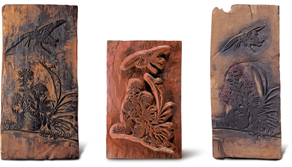
1. Category of woodblocks housed at the ACKS
The Advancement Center for Korean Studies (ACKS) began a “Collect 100,000 Woodblocks Campaign” in 2002, motivated by a donation of woodblocks formerly owned by the Baekdam Clan of Neungseong Gu family in December 2001. Since then, the ACKS has carried out its task of managing donations and the preservation of woodblocks around the country in response to changes in economic conditions and family circumstances. Many prominent families were located in distant areas, but due to difficulties in preserving and protecting their woodblocks, as well as the threat of theft and damage, donations of documents and woodblocks increased greatly.
Against this backdrop, ACKS waged its “Collect 100,000 Woodblocks Campaign” to preserve the woodblocks as they are particularly hard to store and preserve in large numbers. The clans experiencing difficulties in preserving their woodblocks reacted positively to the campaign and willingly donated theirs. As a result, approximately 65,000 woodblocks have been donated as of 2013. As the campaign continued, ACKS completed two jangpangak buildings for the scientific preservation of the woodblocks. Each building is capable of housing 50,000 woodblocks and providing them adequate protection. Furthermore, special attention was paid to the academic value of the woodblocks, and the Woodblock Institute was established in September 2009. It has since been conducting studies and academic research on the woodblocks.
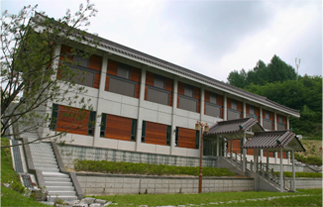
Center For Korean Studies Andong-si,
Gyeongsangbuk-do.
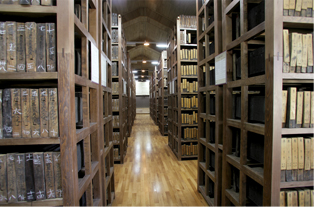
Center For Korean Studies Andong-si,
Gyeongsangbuk-do.
The donated woodblocks are of all categories, including those for publishing books. As of 2013, woodblocks to print collections of works account for the largest portion. ACKS is now storing and preserving 64,264 woodblocks donated by 305 clans. Details are as follows:
Categorization of Woodblock Types Housed at the ACKS(As of Aug. 1, 2013)
| Type | Collection of Works |
Neo- Confucianism |
Genealogy | Study of Ritual |
Historical Biography |
Enlightenment /Moral Training |
Geography | Miscellany | Total |
|---|---|---|---|---|---|---|---|---|---|
| Total | 585 | 52 | 32 | 19 | 18 | 7 | 3 | 4 | 720 |
| Percentage | 81.3 | 7.2 | 4.4 | 2.6 | 2.5 | 1.0 | 0.4 | 0.6 | 100 |
Of the woodblocks housed at the ACKS, collections of works account for the majority. If records, collections of poems and collections of writings by relatives or scholars are included, the collections of works make up over 80 percent. Hence, most of the woodblocks are the writings of individuals. They were engraved in different eras, and after such chaotic situations such as the 1592 Japanese invasion and the Korean War, many of them disappeared and were re-engraved at a later date. The remaining woodblocks survived the indiscriminate plundering of Korean cultural assets during the Japanese colonial era. The chronological categorization of woodblocks preserved by the ACKS is as follows:
Periodical Categorization of Woodblocks Housed at the ACKS(As of Jul. 1, 2013)
| Period | 15thCentury | 16thCentury | 17thCentury | 18thCentury | 19thCentury | 20thCentury | Unknown | Total | ||||||
|---|---|---|---|---|---|---|---|---|---|---|---|---|---|---|
| Early | Late | Early | Late | Early | Late | Early | Late | Early | Late | Early | Late | |||
| Total | 1 | 6 | 13 | 20 | 43 | 77 | 126 | 156 | 237 | 2 | 37 | 718 | ||
| Percentage | 0.1 | 0.8 | 1.8 | 2.8 | 6.0 | 10.7 | 17.5 | 21.7 | 33.1 | 0.3 | 5.2 | 100 | ||
2. Value of the ACKS woodblocks as recorded heritage
In addition to the Advancement Center for Korean Studies, many institutes collect and preserve large volumes of woodblocks, such as: Gyujangak of Seoul National University, Miryang City Museum, Gyeongsang National University in Jinju, Gyeongju Campus of Dongguk University, Chonbuk National University Museum, Daejeon University Museum, Namganjeongsa (academy) in Daejeon and others. However, the ACKS differentiates itself from other institutes by its unique mission of preserving, managing and researching woodblocks donated by clans. All of the woodblocks preserved by the ACKS, such as the writings of Confucian scholars, studies of rituals, neo-Confucianism, children’s education, genealogy, share a common ground: Confucianism. These woodblocks have common and particular features from being produced and preserved by individuals for the sustained development of Confucianism during the Joseon Dynasty which aimed at building the ideal Confucian country.
These woodblocks contain the methodology to transform all people into saints by pursuing moral perfection and commemorating the Confucian saints who helped build a Confucian country. They thought that the methodology would be completed by learning.
However, the aim of learning at that time was not to achieve fame and prestige but to train one’s self first and rule others later. Also, the aim of learning was to bring all people into harmony with nature in order to pursue ways to become Confucian saints. Hence, the woodblocks present the content and procedures to pursue the universal value of the human being, not the ideology or academic system of a particular region or era. This aim was not pursued by an individual but by the collective intelligence which pursued and researched continuously for 500 years, and this aim is still pursued now.
Therefore, preserving these woodblocks forever was desirable to establish continuity of this collective intelligence. By establishing continuity, a planned national ideology to build an ideal Confucian country was preserved in the woodblocks. With this in mind, the woodblocks were manufactured and distributed.
In order to achieve this purpose, the woodblocks were made using very cautious and refined methods. To pass on the universal Confucian values via the woodblocks, not the academic ideology of a particular region or area, strict standards were applied from the beginning. These standards were called “public consensus,” which survived through the Joseon Dynasty, Japanese colonial rule and up until the mid-20th century. The content of the woodblocks, based on public consensus, reflected more of a public aspect than an individual aspect, and strict moral standards were applied. As such, the content was extremely refined, and they tried to preserve the content by making it hard to modify; they did this by producing woodblocks.
Producing woodblocks requires an enormous amount of money and time, but the purpose of publishing books using woodblocks was to pass on the wisdom of ancient sages and permanently preserve their writings without any changes. Through woodblocks, the junior scholars of different generations could always see the academic essence of the ancient sages, and they could develop or deepen further their learning and pass it on to their descendents. In other words, woodblocks are a medium that links the Confucian academic essence from generation to generation.
The woodblocks stored at the ACKS are tangible assets that preserve our ancestors’ academic achievements from different eras, regions, and clans. However, Korea’s “intelligence history,” developed continuously by our “collective intelligence” for the past 500 years, has few parallels in world history. Therefore, we can say that jangpangak, store the essence of Korea’s “collective intelligence.”
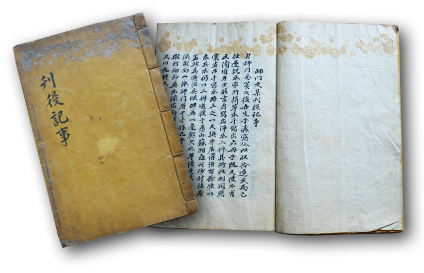 Publication Article 1815,
Publication Article 1815,
Chilgye Baekburam head family
of Gyeongju Choe Clan.
The late Joseon Dynasty, when most of the woodblocks were manufactured, was not an affluent society. Accordingly, it was a tremendous financial burden for a clan to bear the enormous cost to produce them, and in actuality, their production was stopped a few times. Therefore, addressing economic issues was one of the most important factors in producing the woodblocks.
The ACKS owns multiple copies of Ganyeoksiilgi (Diary at the time of publication), which describe in detail the manufacturing process of woodblocks. These diaries contain all of the detailed information on the costs of production, publication and distribution, including the names of participants and engravers. In collecting donations, not only the descendants of the author but also the local Confucian scholars shared the costs to the best of their financial resources; even other regions frequently shared the cost to praise the academic achievements of the author. In addition, supporters frequently visited the production site to encourage and praise the workers.
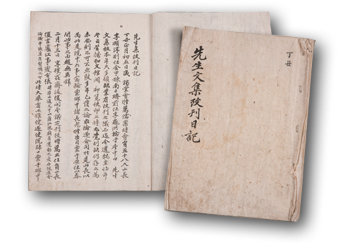 Revised Diary of Toegye Collection of Works
Revised Diary of Toegye Collection of Works
1877, 23.0×32.0cm. Donated by Dosan Academy
Steering Committee. Currently possessed by
ACKS. A diary which recorded all the
details in the 3rd revision and publication
of the Toegye Collection of Works.
This illustrates that even junior scholars, who did not directly learn from the author, naturally participated in praising the ancestors’ academic achievements as members of the community. Therefore, the completed woodblocks belonged to the descendants as well as to the local community. This fact is often confirmed in the process of collecting woodblock donations to the ACKS. When donating woodblocks, some clans perform a ritual when moving the woodblocks to another location. In this ritual, both descendants and local Confucian scholars participate to show their community spirit. Sometimes, local scholars object to the woodblocks being moved, but the descendants support it. This is positive proof that the woodblocks belong to both individuals and the community, a unique aspect of Korean culture. At the same time, it illustrates the value of the woodblocks collected and preserved by the ACKS.

